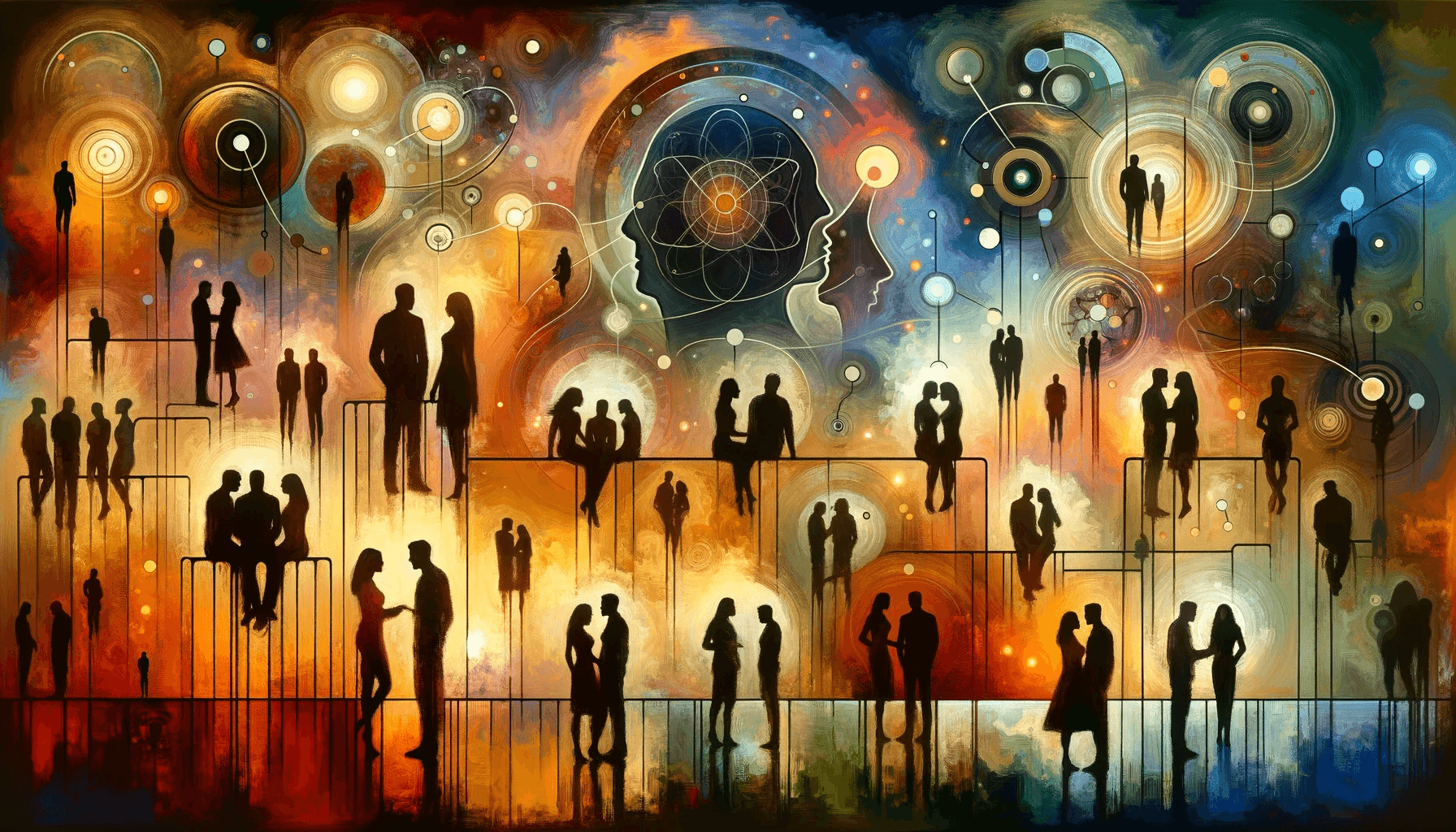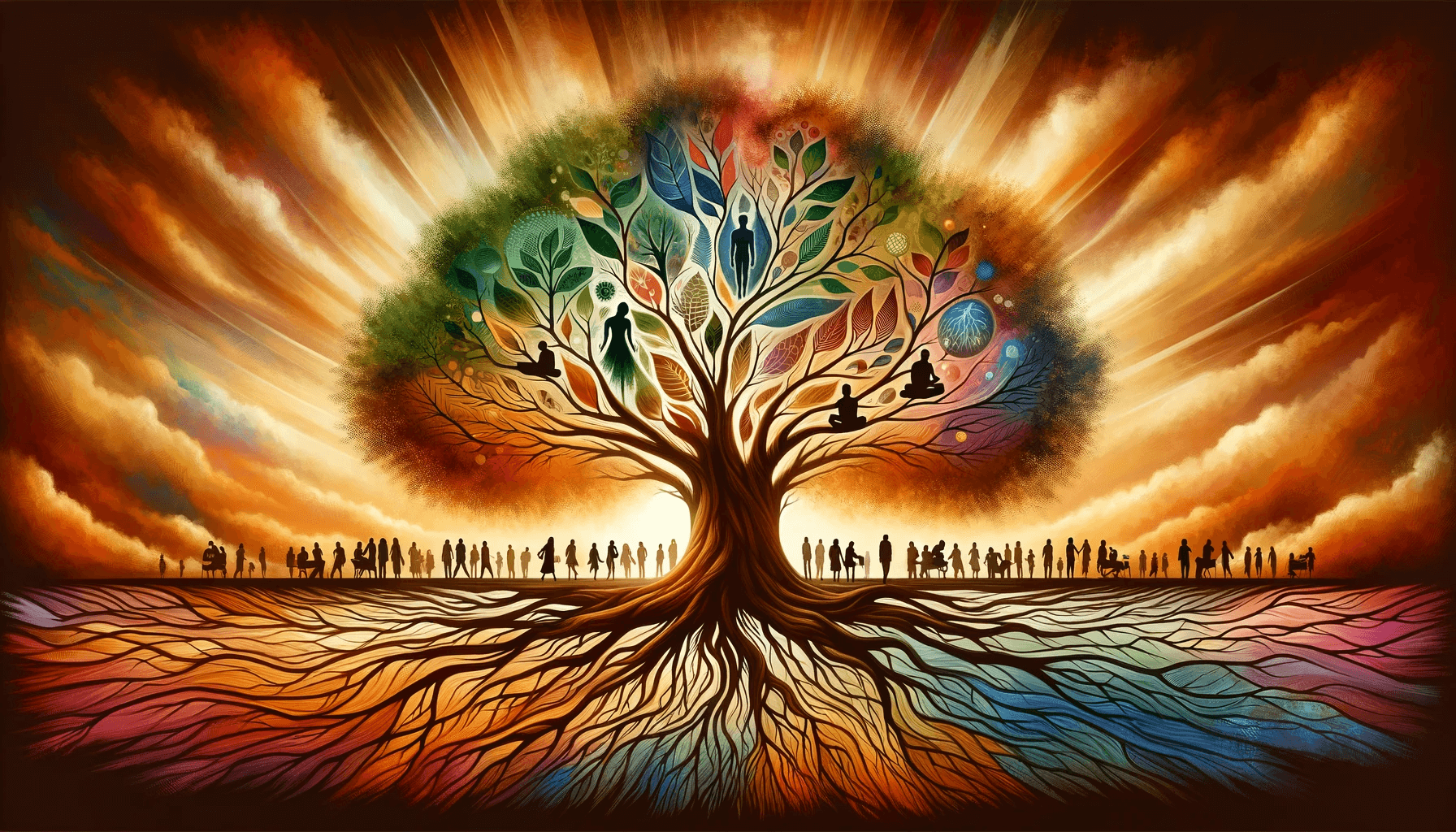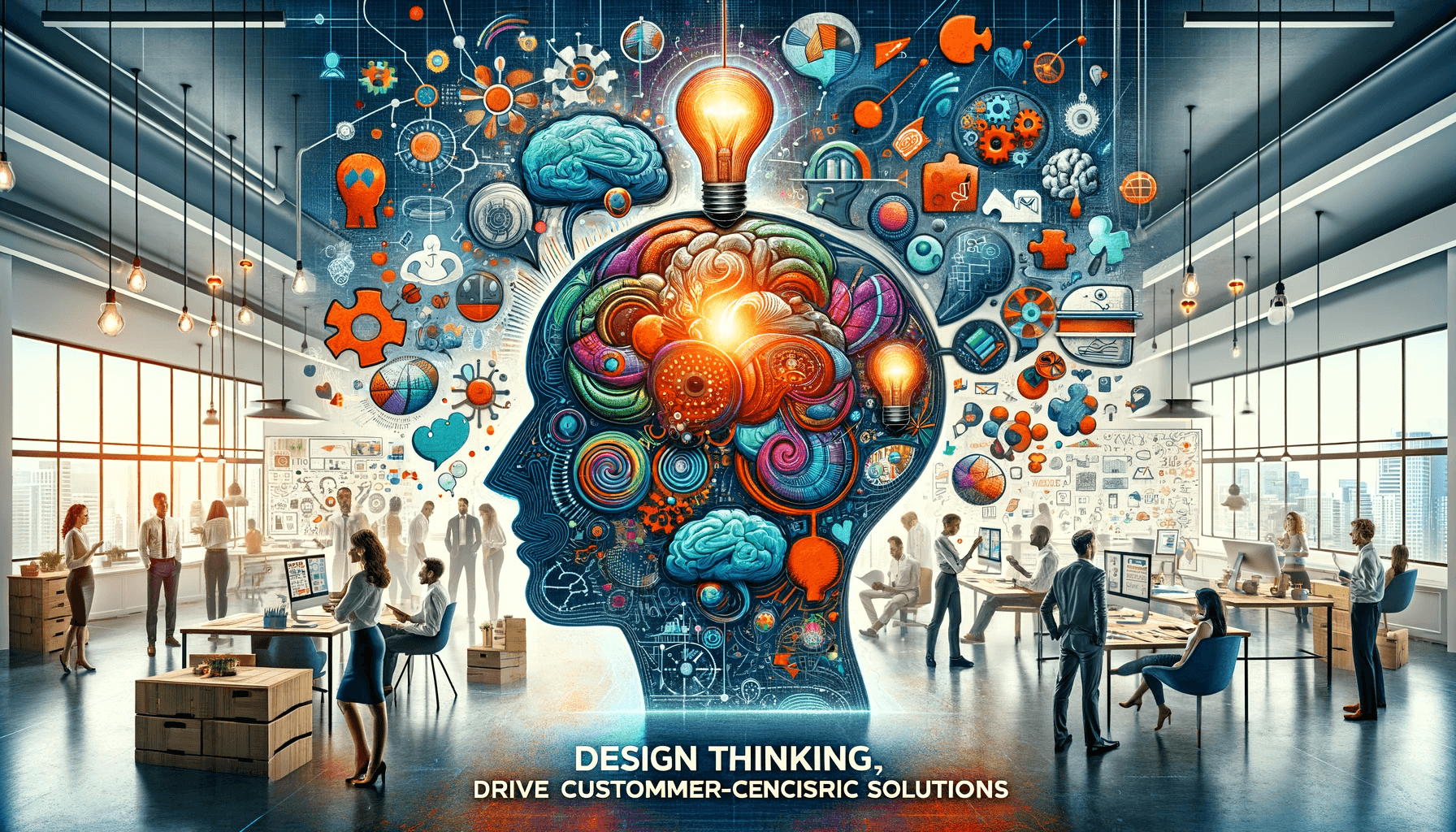Sponsor Get Your Ex Back
Table of Contents
Introduction to Mate Selection
Finding a life partner is one of the most important decisions we make. Choosing a mate has far-reaching consequences, influencing our happiness, well-being, and overall life satisfaction. The mate selection process is complex and multifaceted, involving conscious and unconscious factors. This article will explore the art and psychology of mate selection, delving into the secrets behind a successful relationship.
The Importance of Mate Selection
Mate selection is not a trivial matter but a decision that can shape our lives for years. Choosing the right partner can contribute to our personal growth, emotional fulfillment, and physical health. On the other hand, making a poor choice in a mate can lead to dissatisfaction, conflict, and even divorce. Therefore, understanding the factors influencing mate selection is crucial for creating a lasting and fulfilling relationship.
Evolutionary Psychology and Mate Selection
Evolutionary psychology provides valuable insights into why we are attracted to certain individuals and how mate selection has evolved. According to evolutionary theory, our preferences for a mate are shaped by the need to ensure our offspring’s survival and reproductive success. For example, men tend to be attracted to physical cues of fertility and health in women, such as youthfulness and symmetrical features, as these traits suggest a higher likelihood of producing healthy offspring. Conversely, women are more likely to be attracted to men who display signs of resources and social status, as these traits indicate the ability to provide for and protect a family.
Factors Influencing Mate Selection
Mate selection, a complex and multifaceted process, is influenced by a variety of factors that span biological, psychological, social, and cultural dimensions. Here’s an overview of some key factors:
Biological Factors:
- Genetic Compatibility: People are often attracted to potential mates with different immune system genes, which can lead to healthier offspring.
- Physical Attractiveness: Symmetry and certain physical traits often signal good health and fertility, making them attractive in a mate.
- Pheromones: These subtle chemical signals can play a role in physical attraction, though their exact influence on humans is still debated.
Psychological Factors:
- Personality Traits: Qualities like kindness, humor, and intelligence are often sought after.
- Similarity: People tend to select mates similar to their interests, values, and backgrounds.
- Attachment Styles: An individual’s bonding pattern and emotional behavior can affect mate choices.
Social and Environmental Factors:
- Socioeconomic Status: Social class and economic status can influence mate selection, often with preferences for mates of equal or higher status.
- Cultural Norms and Values: Cultural background can dictate what traits are deemed desirable in a mate.
- Family Influence: Family expectations and approval can significantly affect mate selection in many cultures.
Evolutionary Factors:
- Reproductive Strategies: Evolutionary theories suggest that mate selection is influenced by reproductive potential and strategies, such as seeking a nurturing partner for child-rearing or a physically strong partner for protection.
Technological and Modern Influences:
- Online Dating and Social Media: Technology has expanded the pool of potential mates and changed how people meet and evaluate each other.
- Changing Social Norms: As societal norms evolve, so do the qualities sought in a mate. For example, there’s a growing emphasis on emotional intelligence and relationship partnership.
Each of these factors can interact in complex ways, and the importance of each factor can vary widely among individuals and cultures. Additionally, the mate selection process continues to evolve with societal changes and technological advancements.
Physical Attractiveness in Mate Selection
Physical attractiveness is significant in mate selection and is influenced by biological and cultural factors. Here are some key points about the impact of physical attractiveness in choosing a mate:
Evolutionary Perspective:
- Indicators of Health and Fertility: From an evolutionary standpoint, physical attractiveness is often seen as a sign of health and genetic fitness. Features like clear skin, facial symmetry, and body proportions are subconsciously assessed as good health and fertility indicators.
- Secondary Sexual Characteristics: Features like a pronounced jawline in men and wider hips in women are often associated with sexual maturity and reproductive health.
Cultural Influence:
- Cultural Standards of Beauty: What is considered physically attractive can vary significantly across different cultures and historical periods. For example, depending on cultural norms, body size preferences can range from slim to curvy.
- Media and Social Norms: Media representations can shape perceptions of ideal physical attributes, often creating and reinforcing standards that might not align with natural diversity in body types and features.
Psychological Factors:
- First Impressions: Physical attractiveness can heavily influence first impressions and initial attraction, often setting the stage for further interaction.
- Perceived Personality Traits: People often attribute positive personality traits like kindness, intelligence, or reliability to physically attractive individuals, a phenomenon known as the “halo effect.”
Social and Economic Considerations:
- Social Status and Attractiveness: In some contexts, physical attractiveness can be associated with higher social status or success, influencing mate selection decisions.
- Matching Hypothesis: People often seek partners similar to themselves in physical attractiveness, a concept known as the “matching hypothesis.”
Personal Preferences and Individual Differences:
- Subjectivity: While some general trends exist, physical attraction is highly subjective and varies greatly from person to person.
- Influence of Personal Experiences: Individual experiences and personal history can shape what one finds attractive in a potential mate.
Changing Trends and Awareness:
- Shift Towards Other Qualities: There is a growing awareness and shift towards valuing other qualities like emotional intelligence, compatibility, and shared interests alongside physical attractiveness.
- Body Positivity Movement: Movements like body positivity challenge traditional notions of beauty and encourage acceptance of all body types.
Physical attractiveness, while an important factor in mate selection, interacts with many other factors, including personality, cultural background, social status, and individual preferences. It’s important to recognize that while physical attraction can initiate interest, sustainable relationships often require deeper connections based on shared values, emotional compatibility, and mutual respect.
Personality Traits in Mate Selection
Personality traits are crucial in mate selection, often influencing long-term relationship satisfaction and compatibility. Here’s an overview of how various personality traits impact the process of choosing a partner:
The Big Five Personality Traits: These are commonly used to describe human personality and include:
- Openness: Individuals highly open to experience often seek similar traits in a partner, valuing creativity, intellectual curiosity, and a willingness to explore new ideas and experiences.
- Conscientiousness: Conscientious individuals typically prefer partners who are reliable, organized, and responsible, as these traits contribute to stability and dependability in relationships.
- Extraversion: Extroverted individuals may gravitate towards partners who are also outgoing and sociable, although sometimes they might prefer introverted partners who balance their energy.
- Agreeableness: High levels of agreeableness in a partner are often desirable, as they are associated with being kind, empathetic, and cooperative.
- Neuroticism: Lower levels of neuroticism (i.e., emotional stability) are generally preferred, as high neuroticism can be linked to moodiness and emotional instability.
Complementarity vs. Similarity:
- Similarity: Many people are attracted to partners with similar personality traits, which can lead to a more harmonious relationship with fewer conflicts.
- Complementarity: Sometimes, individuals seek partners whose traits complement their own. For example, a highly organized person might appreciate a more spontaneous partner, bringing balance to the relationship.
Kindness and Physical Attractiveness:
- Kindness is often rated as one of the most desired traits in a partner. It’s associated with being caring, supportive, and empathetic, which is crucial for a healthy and long-lasting relationship.
Sense of Humor:
- A good sense of humor is highly valued in a partner. It can indicate intelligence and creativity and plays a significant role in managing conflicts and maintaining relationship satisfaction.
Intelligence:
- Intelligence, or intellectual compatibility, is important for many people. It can stimulate conversations, shared problem-solving, and a mutual understanding of life goals and values.
Emotional Stability and Maturity:
- Emotional stability is key in handling the ups and downs of a relationship. In this context, maturity involves self-awareness, the ability to regulate emotions, and the capacity for empathy and understanding.
Honesty and Trustworthiness:
- Honesty and trustworthiness are foundational to building and maintaining trust in a relationship, making them highly sought-after traits.
Adaptability and Flexibility:
- Adapting to changing circumstances and being flexible in one’s approach to problems is valuable in maintaining a healthy relationship, especially through life’s inevitable challenges.
Ambition and Life Goals:
- Shared ambitions and life goals can greatly enhance compatibility, providing a common direction and purpose for the relationship.
Cultural and Social Influences:
- Cultural and social backgrounds can influence which personality traits are valued in a partner, with different cultures placing varying importance on certain traits.
It’s important to note that the preference for certain personality traits can vary widely among individuals and can be influenced by one’s personality, past experiences, cultural background, and current life situation. While personality compatibility is important, successful relationships rely on mutual respect, effective communication, and shared values.
Social Status and Mate Selection
Social status, including education, occupation, and income, can significantly influence mate selection. People often seek partners similar to themselves regarding socioeconomic background, as this can contribute to a sense of shared values and lifestyle. However, it is important to note that social status should not be the sole determining factor in mate selection, as it does not guarantee compatibility or happiness in a relationship.
Cultural Influence on Mate Selection
Cultural norms and societal expectations also shape our preferences in a mate. Different cultures have different ideals of beauty and desirability, which can influence our perceptions and choices. For example, in some cultures, arranged marriages are the norm, and factors such as family background and social standing may carry more weight than personal preferences. Understanding and navigating these cultural influences is essential for making informed decisions in mate selection.
Compatibility and Mate Selection
Compatibility is a key factor in mate selection, influencing the potential for a long-lasting and fulfilling relationship. Here’s an exploration of how compatibility plays a role in choosing a partner:
Emotional Compatibility:
- Understanding and Empathy: Understanding and empathizing with each other’s feelings and experiences is crucial for emotional compatibility.
- Communication Styles: Compatible couples often have similar or complementary communication styles, enabling them to effectively navigate conflicts and share feelings.
Intellectual Compatibility:
- Shared Interests and Curiosity: Intellectual compatibility can involve shared interests, hobbies, or a mutual curiosity about the world, fostering engaging and stimulating interactions.
- Education and Intelligence: Similar levels of education and intelligence can contribute to intellectual compatibility, although it’s more about how individuals think and communicate than their formal education or IQ.
Lifestyle Compatibility:
- Daily Habits and Living Styles: From sleeping patterns to cleanliness, compatible partners often have similar lifestyles or are willing to accommodate each other’s habits.
- Leisure Activities: Enjoying similar leisure activities or being open to participating in each other’s interests can enhance lifestyle compatibility.
Value and Belief Systems:
- Moral and Ethical Values: Sharing similar core values and ethics is fundamental for many couples, as these beliefs often guide life decisions and behaviors.
- Religious and Cultural Beliefs: Similar or respectful understanding of each other’s religious and cultural beliefs can be important, especially in how these beliefs influence daily life and major life events.
Social Compatibility:
- Family and Friends: Getting along with each other’s family and friends and having a similar approach to socializing can significantly impact a relationship’s success.
- Social Needs: Compatible partners often have similar social needs, such as the desire for socializing or alone time.
Financial Compatibility:
- Spending and Saving Habits: Similar attitudes towards spending, saving, and financial goals can prevent many conflicts in relationships over money.
- Economic Background and Goals: Similar or understanding perspectives on economic background and aspirations can enhance compatibility.
Physical and Sexual Compatibility:
- Physical Attraction: Mutual physical attraction is often an initial factor in mate selection.
- Sexual Preferences and Libido: Compatible sexual preferences and similar levels of libido can contribute to a satisfying and fulfilling sexual relationship.
Long-Term Goals and Aspirations:
- Life Goals: Sharing similar long-term goals, such as career aspirations, desires for family, and lifestyle choices, is crucial for long-term compatibility.
- Growth and Change: Being compatible in how people view growth and change and being supportive of each other’s evolution over time.
Conflict Resolution and Problem-Solving:
- Handling Conflicts: Compatibility in managing and resolving conflicts can greatly influence relationship satisfaction.
- Support and Understanding: Offering support and understanding in times of stress or challenge is a key aspect of compatible relationships.
Adaptability and Flexibility:
- Dealing with Life Changes: Life brings changes and challenges; compatible partners are often those who can adapt and grow together through these times.
Compatibility in relationships is multifaceted and varies greatly among couples. It’s not just about having similarities; it’s also about how differences are managed and respected. Successful relationships often involve shared values and interests, effective communication, mutual respect, and a willingness to grow and adapt.
Communication in Mate Selection
Effective communication is the foundation of any healthy relationship. It is about expressing our thoughts and feelings and actively listening and understanding our partner. Good communication allows us to resolve conflicts, build trust, and foster emotional intimacy. When choosing a mate, assessing their communication style and determining whether it aligns with our own is essential.
Red Flags to Watch Out for in Mate Selection
Identifying red flags in mate selection is crucial for forming healthy and fulfilling relationships. Here are some common red flags to be aware of:
Lack of Communication:
- Poor or infrequent communication can indicate a lack of interest or commitment. Partners need to share thoughts and feelings openly.
Dishonesty and Secrecy:
- Regular dishonesty or hiding information can erode trust, a foundational element of any relationship.
Controlling Behavior:
- Attempts to control where you go, who you see, what you wear, or how you spend your time and money are major red flags.
Lack of Respect:
- Disrespectful behavior, whether through words or actions, is a serious concern. Respect is key in any relationship.
Abusive Behavior:
- Any form of abuse – physical, emotional, sexual, or verbal – is a significant red flag. Abuse often escalates and should never be ignored.
Substance Abuse or Addictive Behaviors:
- Unaddressed substance abuse or addictive behaviors can lead to a range of relationship issues, including financial strain, neglect, and abuse.
Inconsistency and Unreliability:
- Frequent canceling of plans, not following through on promises, or needing to be more reliable can signal a lack of commitment or respect.
Overly Jealous or Possessive Tendencies:
- While some jealousy is normal, excessive jealousy, particularly if it leads to accusatory or controlling behavior, is unhealthy.
Disparaging Comments or Actions:
- Regularly commenting negatively about you, your interests, your friends, or your family shows disrespect.
Lack of Emotional Availability:
- An unwillingness to discuss feelings or future plans can indicate emotional unavailability or a lack of commitment to the relationship.
Ignoring Boundaries:
- Disregarding your emotional, physical, or otherwise boundaries is a sign of disrespect.
Rapid Escalation:
- Rushing the relationship or making serious commitments too quickly can indicate impulsivity or a desire to control.
Frequent Arguments or Conflicts:
- Consistent conflict, especially early in a relationship, can indicate incompatibility or a propensity for drama.
Inconsistent Values or Life Goals:
- Significant differences in core values, ethics, or life goals can lead to fundamental conflicts in a relationship.
Lack of Independence or Co-dependency:
- Excessive dependence on a partner for emotional, financial, or physical needs can create an unhealthy dynamic.
Negative Relationships with Others:
- Consistently poor relationships with family, friends, or coworkers can be a red flag for how they might treat you.
It’s important to approach relationships with open-mindedness and understanding and with a clear awareness of your needs, values, and boundaries. Recognizing red flags early can help prevent deeper emotional investment in potentially harmful relationships. Remember, it’s always okay to seek advice from trusted friends, family, or professionals if you’re unsure about a relationship.
The Role of Love and Attraction in Mate Selection
Love and attraction are fundamental aspects of mate selection. Love is a complex emotion encompassing affection, attachment, and passion. Attraction is the initial spark that draws us to someone and ignites romantic interest. While love and attraction are essential for a successful relationship, they are not enough. Building a lasting and fulfilling relationship requires a deep emotional connection, shared values, and a commitment to mutual growth.
Developing a Successful Relationship Through Mate Selection
Choosing a mate is just the beginning of a relationship; the real work lies in nurturing and developing that relationship over time. Investing time and effort into building a strong foundation of trust, communication, and mutual respect is important. Continual growth and adaptation are necessary to navigate the challenges that arise in any long-term partnership. Seeking support from couples therapy or relationship coaching can also be beneficial in maintaining a healthy and thriving relationship.
Conclusion
Mate selection is a complex process that involves a combination of conscious and unconscious factors. By understanding the art and psychology behind mate selection, we can make more informed decisions and increase the likelihood of creating a successful and fulfilling relationship. Factors such as physical attractiveness, personality traits, social status, cultural influences, compatibility, and communication play a role in mate selection. By prioritizing these factors and being mindful of red flags, we can pave the way for a lasting and meaningful connection with our chosen partner. Remember, the journey of mate selection is just the beginning, and the true work lies in building and nurturing a relationship based on love, trust, and mutual growth.
Call to Action: Are you currently in the process of mate selection? Seek guidance from a relationship expert to ensure you make informed decisions and set the foundation for a successful and fulfilling relationship.





Leave a Reply